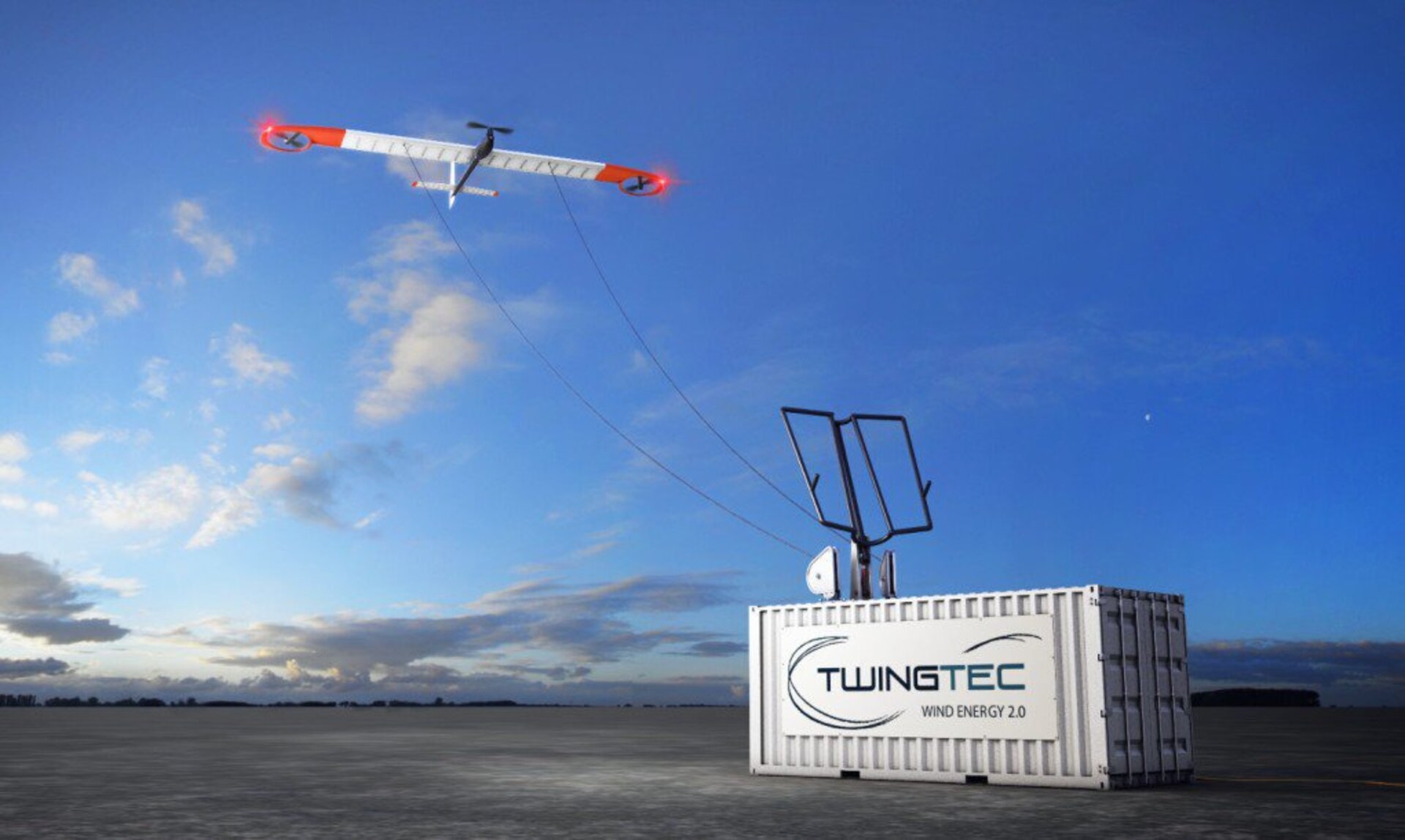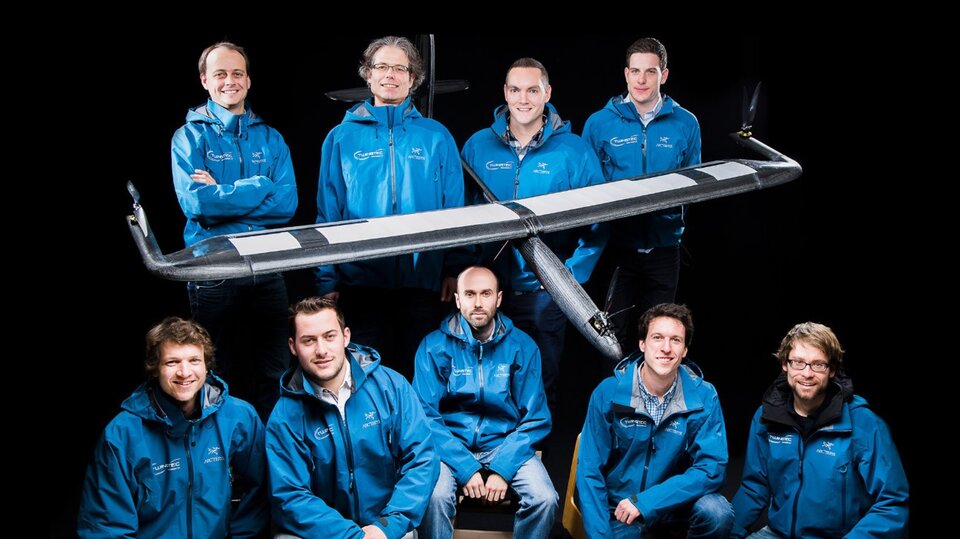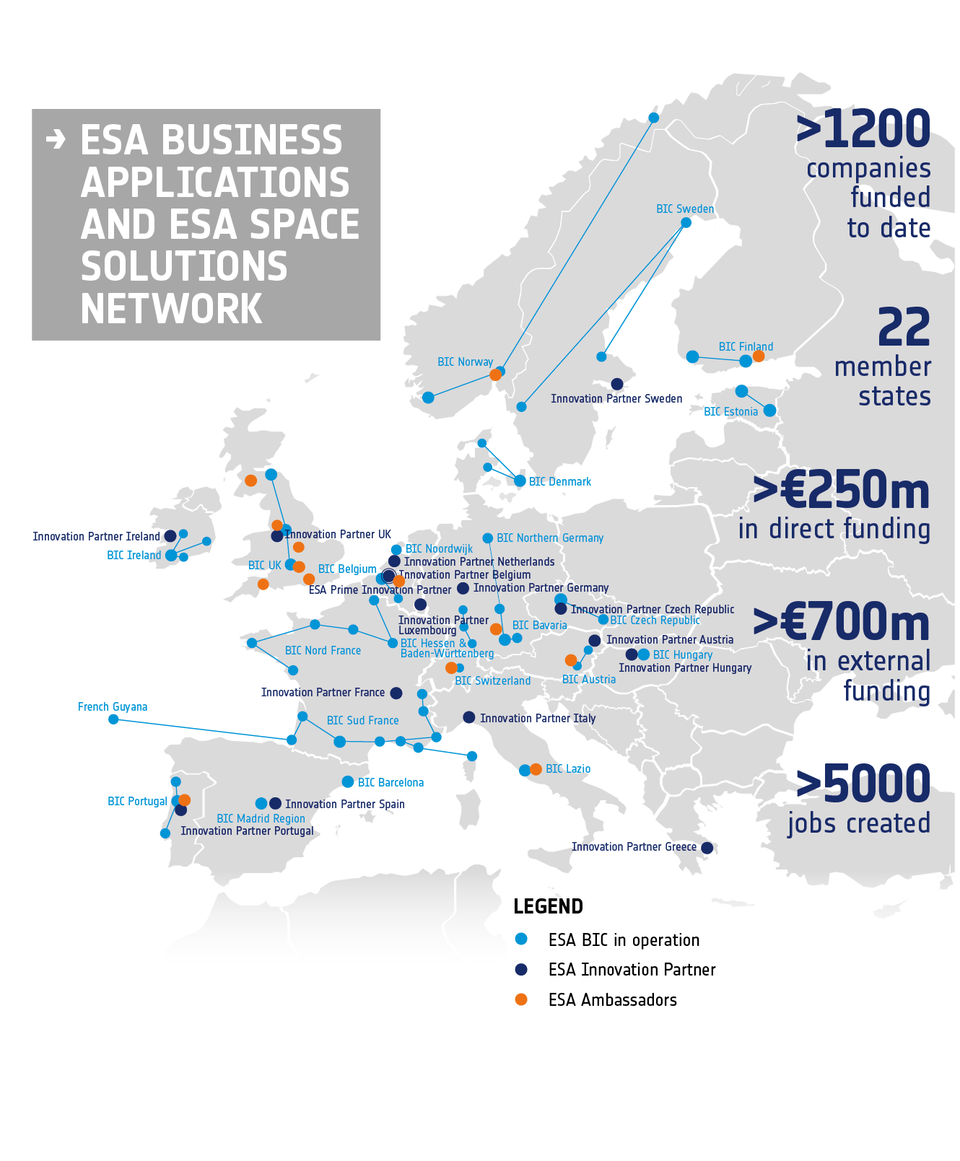Harvest electricity from the wind by kites
Meet ESA BIC start-up TwingTec at Paris Air Lab 20/6 and learn about their innovative solution to generate electricity. Fly a drone like at kite at high altitudes to catch the wind and generate electricity, then transfer it to ground by cables.
The wind blows more strongly at higher altitudes and that is one of the major reasons why wind turbines have grown ever taller each year. GE begin this year to erect the tallest turbine in the Netherlands with an amazing rotor diameter of 220 meters, that stretches 260 meters from its base to blade tips, nearly three times the height of New York’s Statue of Liberty.

But even if such mega turbines produce an amazing 12 megawatts, their masts and blades able to withstand the terrifying stresses at such high-altitude wind gathering are very costly.
Skip the mast and fly a kite
Swiss start-up Twingtec now hosted at ESA Business Incubation Centre in Switzerland has decided to go for a completely different and very innovative approach: skip the mast altogether and instead fly kites at high altitudes to capture the wind.
TwingTec`s prototype rises like a drone into the air, lifted by electrically driven propellers. When reaching the indented height the propellers at the end of its wings with a combined span of three metres turn to become electricity generators. Electricity is transported The kite stays aloft until its sensors indicate that the wind has died down, after which it lands itself automatically.

TwingTec is now building a bigger version, with a wingspan of 5.5 metres, that will begin producing power for bkw Energie, a Swiss utility, in October.
Without a tower or foundation, systems can be integrated into containers, allowing for low cost transportation and easy installation.
Be Mobile
Without a tower or foundation, systems can be integrated into containers, allowing for low cost transportation and easy installation.
Initially, TwingTec sees the remote areas for its electricity generating system TwingPower in remote. These hard to reach areas customers are looking to save diesel fuel and reduce their environmental footprint. Examples can include off-grid mines and holiday resorts.
Looking forwards, larger systems in the MW range will be developed and deployed in large farms to produce clean energy, cheaper than coal, and with construction costs significant lower than conventional tall wind turbines.
Hear TwinTec pitching at the INNOVATION STAGE 20 June 16:00-16:30

Meet the TwingTec entrepreneurs at the PARIS AIR LAB at Paris Air Show 20 June at their stand PROTECT S2.
PARIS AIR LAB - Paris Air Show
AN EXHIBITION DEDICATED TO INNOVATION FOR AEROSPACE
After the success of its first edition 2 years ago, Paris Air Lab returns at the heart of the Paris Air Show, in the Concorde hall, with 3,000 m² dedicated to innovation and prospective in the aerospace, an industry decisively open to the future. Mobilities of tomorrow, AI, exploration and environment; Paris Air Lab will focus on major topics in the field.
Spotlight on industrial innovations and startups
Twelve booths are dedicated to 80 new comers: startups from more than 20 countries around the world display their projects and present their work. Discover important innovation programs through 12 collaborative booths around 4 key areas:
- ENABLE, focusing on innovative technologies in the industry
- PROTECT, dedicated to the sustainable aerospace industry
- TRAVEL, focused on the future of aeronautics mobility
- EXPLORE, featuring iconic space missions.
In the heart of Paris Air Lab, the booth «Understanding climate change» shows how planes and satellites contribute to the monitoring of climate change through embedded devices.
ESA Business Applications and Space Solutions

ESA’s Business Applications and Space Solutions programme has a network of 20 ESA Business Incubation Centres, 15 ESA Innovation Partners and 14 ESA Ambassadors throughout Europe. It co-funds projects and start-ups, while also offering technical and business support to companies that seek to deliver rapid innovation and to raise private investment.
Overall ESA spends €400 million a year on strengthening the competitiveness of European and Canadian companies in the global markets for both satellite communications andr downstream applications.
ESA BICs - World's largest ecosystem for space-related entrepreneurship
The ESA Business Incubation Centre Hessen & Baden-Württemberg was founded in 2007 and it part of the wider network of 20 ESA BICs throughput Europe.
The 20 ESA Business Incubation Centres (ESA BICs) form the largest ecosystem in the world for space-related entrepreneurship and have fostered over 700 start-ups throughout Europe. Spread across some 60 cities in 17 countries, more than 300 start-ups are currently under the two-year business incubation development booster programme.
The centres offer complete access to all aspects of space-related innovation, technology and intellectual properties and is a gateway to ESA and European space research and developments. Located in Austria, Belgium, Czech Republic, Estonia, Finland, France, Germany, Hungary, Ireland, Italy, Norway, Portugal, Spain, Sweden, Switzerland, the Netherlands and UK, with more to open, over 700 start-ups have been fostered and another 180 new start-ups are taken in yearly to be supported under the two-years business development booster programme.







